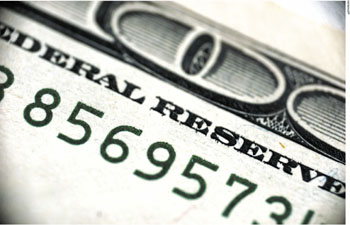US FISCAL POLICY
SHIFTS IN THE REFLATION TRADE
Samantha Amerasinghe points to higher US interest rates as inflation pressures loom

For the US economy, the only way is up. At least this is what the financial markets seem to think. The world economy and financial markets are enjoying a surge in confidence. Donald Trump’s election as President of the United States triggered a surge in positive economic sentiment due to his policy pledge that the new administration would pursue deregulation, tax cuts and reform, and boost infrastructure spending.
With the Republicans enjoying a majority in both the US Congress and Senate, we expected Trump not to have to face the paralysing gridlock that former president Barack Obama endured for most of his term in office. But the failure of Congress to repeal the healthcare bill is a significant legislative setback that has led investors to reconsider the popular reflation trade.
The reflation or ‘Trump’ trade was premised on the belief that the Trump administration will bring material fiscal easing to the American economy through tax cuts and major infrastructure spending. US stocks and securities in general accelerated following Trump’s election. A gridlocked Congress and fractured Republican party – illustrated by the healthcare bill debate – could undermine this optimism.
Meanwhile, two important shifts in the reflation trade are noteworthy.
 Firstly, it is no longer an ‘America First’ trade. The US has outperformed the rest of the world since the election and through most of the first quarter of this year. But over recent weeks, the gap has closed with European and emerging stocks both outperforming the US.
Firstly, it is no longer an ‘America First’ trade. The US has outperformed the rest of the world since the election and through most of the first quarter of this year. But over recent weeks, the gap has closed with European and emerging stocks both outperforming the US.
Secondly, inflation expectations – the critical driver of the belief in reflation – are beginning to fall as the US Federal Reserve’s five-year break evens shot up following the election and have remained above two percent (the Fed’s target) for the past three months. We are beginning to see some slippage but by no means is this a reversal of the reflation trade.
Policy makers are becoming increasingly confident that America’s economic recovery will lift inflation. The central bank notes that headline inflation has moved closer to its two percent objective although core inflation (its preferred measure) remains lower. While markets are excited about the prospect of Trump’s reflationary policies, we remain sceptical about whether they will materialise.
As expected, the Fed raised short-term interest rates in March by 25 basis points, bringing the rate on excess reserves (IOER) to one percent. This is only the third time the central bank has hiked rates since the global financial crisis. The interesting question now is: how many interest rate hikes will there be in 2017?
In US Fed policy, it appears that Trump’s fiscal plans aren’t currently playing an important role. The Fed seems to be taking a cautious view of Trump’s ambitious fiscal-easing plans, aware of the challenge of getting them through Congress.
Acceleration in the pace of rate hikes – from once a year to roughly once a quarter – is mostly on the back of a more positive global growth backdrop, improving US data and healthy financial conditions that include a solid stock market rather than a pre-emptive move ahead of more fiscal easing led by the Trump administration.
While Fed Chair Janet Yellen didn’t explicitly signal a June rate hike, she emphasised that the dot plot still showed three rate hikes this year that are consistent with “gradual” guidance. One more or less rate hike would still be in line with this guidance.
Furthermore, rate hikes are contingent on the economy continuing to perform well and financial conditions staying supportive.
While we focus on the Trump reflation trade and solid growth the US economy is currently enjoying, many at the Fed will be weighing options for when the next downturn arrives.
Historically, the Fed cuts interest rates by four to five percentage points in a downturn, which was sufficient to push the economy out of recession and into growth. Central banks hike interest rates to manage inflation and curb economic overheating. But they’re cognisant that they must be able to cut interest rates and manage the economy in a downturn.
Under an extreme scenario, the Fed’s models suggest that policy rates will be two percent before the next downturn.
The present strength of the US economy offers the Fed an opportunity to begin hiking rates towards that level even with high uncertainty about Trump’s fiscal plans. We expect three Fed rate hikes this year that are to be followed by another two in early 2018.
Due to the high sensitivity of US growth to borrowing costs (given the high debt level in the economy), the Fed could struggle to raise rates past two percent next year.
That said, tighter monetary conditions will eventually lead to a cooling of economic activity. The economy has more room to run for now but the window for hikes will be short with activity likely to moderate next year. Only a sharp tightening in financial conditions or higher oil prices could lead to a halt in rate hikes.






Leave a comment